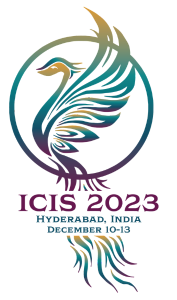Loading...
Paper Number
2552
Paper Type
short
Description
In the rapidly evolving digital transformation (DT) landscape, understanding organizational identity (OI) complexities becomes imperative. Leveraging a comparative analysis of AutoCorp and its spinoff, SoftCorp, this paper unfolds OI tensions in the context of DT. Despite advances in the literature on OI and DT, a gap exists in understanding how conflicting identities within a parent company and its spinoff can impact the organizations and the products they develop. We unearth that the dominant identity in AutoCorp, rooted in traditional manufacturing, creates tensions with the digital service-provider identity in SoftCorp. Additionally, we find that such separation may temporarily relieve internal tensions but introduce new challenges at the organizations’ boundaries, affecting the digitized product. Our findings contribute to the theoretical discourse in OI and provide insights for companies undergoing DT. In our ongoing research project, we plan to develop an integrative framework reconciling these diverging identities for optimal digitized product development.
Recommended Citation
Keilbach, Anna; Hein, Andreas; and Krcmar, Helmut, "Pathways for Digital Transformation: An Organizational Identity Perspective" (2023). ICIS 2023 Proceedings. 19.
https://aisel.aisnet.org/icis2023/diginnoventren/diginnoventren/19
Pathways for Digital Transformation: An Organizational Identity Perspective
In the rapidly evolving digital transformation (DT) landscape, understanding organizational identity (OI) complexities becomes imperative. Leveraging a comparative analysis of AutoCorp and its spinoff, SoftCorp, this paper unfolds OI tensions in the context of DT. Despite advances in the literature on OI and DT, a gap exists in understanding how conflicting identities within a parent company and its spinoff can impact the organizations and the products they develop. We unearth that the dominant identity in AutoCorp, rooted in traditional manufacturing, creates tensions with the digital service-provider identity in SoftCorp. Additionally, we find that such separation may temporarily relieve internal tensions but introduce new challenges at the organizations’ boundaries, affecting the digitized product. Our findings contribute to the theoretical discourse in OI and provide insights for companies undergoing DT. In our ongoing research project, we plan to develop an integrative framework reconciling these diverging identities for optimal digitized product development.
When commenting on articles, please be friendly, welcoming, respectful and abide by the AIS eLibrary Discussion Thread Code of Conduct posted here.



Comments
14-DigitalInnovation